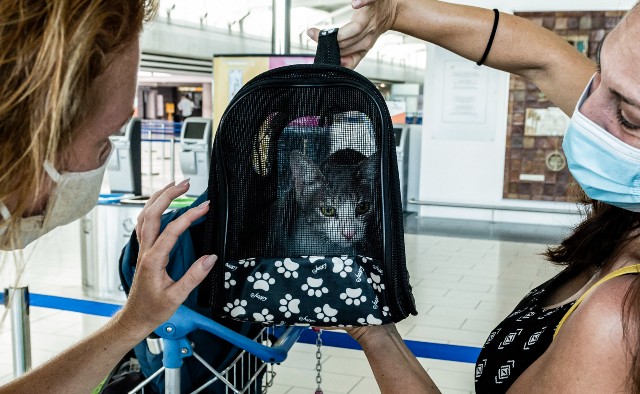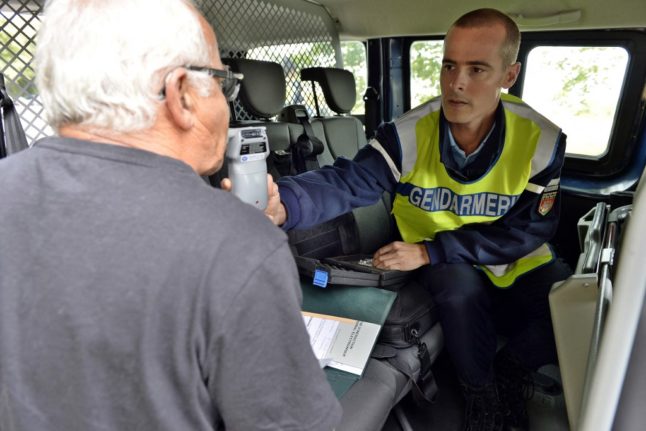Paperwork
The paperwork required for your dog or cat to travel to Europe with you is the biggest hurdle. A misstep here could derail your travel plans altogether or leave your pet stranded in an airport quarantine facility.
- As soon as possible: Find a USDA accredited veterinarian authorised to issue an EU health certificate for international pet travel (search for one in your area here). Ask them to review the country-specific requirements of your destination—these can differ slightly but are largely the same across the EU. Your pet will need to be current on their rabies vaccinations and have an ISO-compliant microchip or legible code tattoo.
- 30 days before departure: Schedule an appointment with the USDA accredited vet to conduct the health check for the EU health certificate. These are only valid for 30 days, so you can’t get a head start on this step. Your veterinarian can fill out the health certificate online through the APHIS portal. Double-check to confirm the microchip number in your paperwork matches the number displayed on the reader in the vet’s office.
- 10 days before departure: Get your pet’s health certificate endorsed by your regional APHIS Veterinary Services Endorsement Office. Some states have several of these offices, and some have none—if yours is nearby, call ahead to see if in-person, same day endorsement appointments are available. If not, you’ll need to pay in advance for return shipping to receive the original document before your departure—you need the original with inked signatures and embossed stamps to enter the EU. You’ll also need to pay the endorsement fee, $38. The endorsement must be completed no earlier than 10 days before your departure.
- Day of departure: Bring the EU health certificate, the original APHIS endorsement, and, if your pet’s microchip isn’t ISO compliant, your own microchip reader in your carry-on luggage. Present this at your final destination—go through the “something to declare” line in customs.
Carry-on or Cargo?
Small pets—generally under 8 kg or 17 lbs—can ride in the cabin with you, while bigger animals will need to travel in the cargo hold. But since the pandemic began, both Delta and United airlines have suspended the travel of pets in DeltaCargo and United PetSafe travel respectively. American Airlines only allows active-duty military to check pets.
When pets are allowed to travel by cargo, they need an additional airline-specific certification from a vet that they’re healthy enough to fly (as a generally rule, brachycephalic or snub-nosed breeds—like pugs, bulldogs, or Persian cats—can’t travel in the hold). Your airline will provide requirements for carriers allowed in the cargo hold. Pets can’t fly in cargo if it’s too hot or cold in your departure, destination or connecting airports, so be careful if you plan to travel in high summer or winter.
Airlines and plane tickets
Forget the points, because your preferred airline may not be the best choice for this long haul with your pet. Airlines charge for pet tickets whether they’re in the cabin with you or in the hold—these range from about $100 to $200. Your seat selections may also be limited since bulkheads and first-class seats don’t always accommodate carriers.
- Book your tickets by phone. Many airlines don’t allow you to book plane tickets online when you’re travelling with your pet. This is because there are stringent requirements for carriers and a limited number of pets allowed per flight.
- Review carrier requirements with agent. If you plan to travel with your pet in the cabin, the customer service agent will check the underseat dimensions for each leg of your flight (note that the maximum allowable size for the pet carrier is often smaller than the underseat dimensions listed on any plane specs you might find online). If you’re flying with multiple airlines—even partners like Delta and AirFrance—you’ll likely have to repeat this process with the partner airline as well. You may need to submit the dimensions of your carrier and sometimes even pictures for approval.
- Links to pet travel guides for major airlines
Carry-on carriers
Your cat or dog will be stowed under the seat in front of you. A rule of thumb is your pet needs to be able to stand, turn around, and sit comfortably while in the carrier under the seat. Some airlines demand a soft-sided carrier, while others allow hard carriers. Several sides of the carrier will need ventilation.
The runaway favorite carrier for in-cabin pets is the Sherpa Original or Sherpa Deluxe — it’s the Wirecutter’s pick and has nearly 11,000 5-star reviews on Amazon. It’s designed to match the requirements of most major airlines.
To sedate or tranquilize?
The Federal Aviation Administration advises against sedatives for pets since their effects on animals at high elevations are poorly studied, and some drugs can have a stimulating effect (which will only heighten your pet’s anxieties, or make them respond aggressively). Do not sedate or tranquilize your pet for the first time during air travel, even if the medication is prescribed by your vet. If you’re worried about your pet’s nerves, remember a bad reaction to medication—or an overdose—will be much more traumatic.
Pets travelling in the cargo hold can’t be sedated or tranquilized and won’t be allowed to fly if they appear groggy or disoriented.



 Please whitelist us to continue reading.
Please whitelist us to continue reading.
Member comments